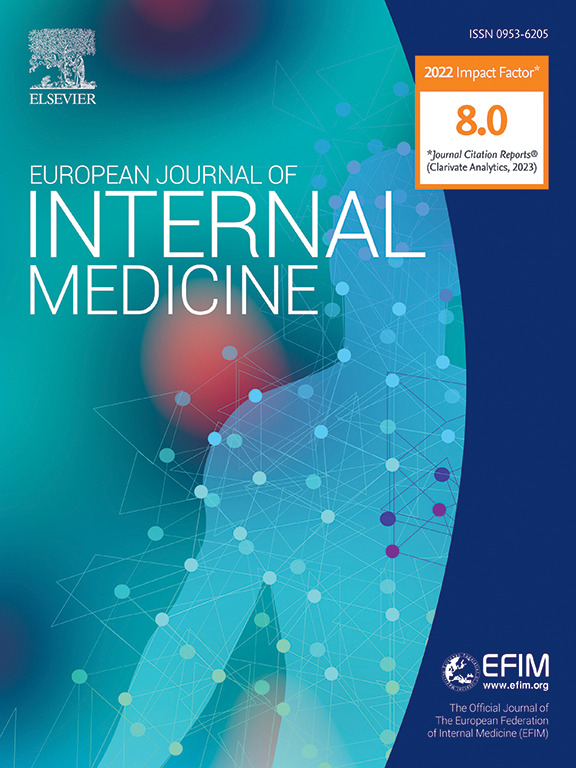奥贝胆酸对低磷脂相关性胆石症的保护作用的物理化学解释。
IF 6.1
2区 医学
Q1 MEDICINE, GENERAL & INTERNAL
引用次数: 0
摘要
尽管胆囊切除术和熊去氧胆酸治疗,低磷脂相关性胆石症患者仍可能出现复发性胆道症状和并发症。最近,在该患者组中报道了强效法内甾体X受体(即胆汁盐受体)激动剂奥比胆酸联合熊去氧胆酸治疗的有益临床效果。相比之下,其他研究报道了在奥贝胆酸单药治疗期间更多的胆结石相关事件和胆囊胆固醇饱和指数升高。本文就胆汁中胆固醇的溶解和结晶进行了深入的综述,包括胆固醇胆结石发病机制的所有相关物理化学方面。我们提供了一个解释,调和了以前出版物中看似矛盾的数据。我们认为,由于众所周知的法内甾体X受体刺激抑制了胆固醇在肝内的胆盐合成,因此在奥贝胆酸治疗期间胆盐浓度降低。因此,胆道胆固醇的溶解作用从混合胶束转变为胆固醇-磷脂囊泡,尽管胆固醇饱和指数增加,但胆固醇结晶受到抑制(后者只考虑了胶束胆固醇的溶解作用)。我们认为,如果同时使用熊去氧胆酸治疗可以防止奥比胆酸(一种分泌到胆汁中的疏水胆盐)增加胆盐的疏水性,则奥比胆酸具有保护结石的作用。我们还建议未来研究奥比胆酸和其他法尼松X受体激动剂的作用,以改善胆囊切除术后低磷脂相关性胆结石患者和其他胆结石患者持续胆道问题的前景。结论:奥贝胆酸可增强熊去氧胆酸的护石作用。本文章由计算机程序翻译,如有差异,请以英文原文为准。
A physico-chemical explanation for the litho-protective effects of obeticholic acid in low phospholipid-associated cholelithiasis
Patients with low phospholipid-associated cholelithiasis may suffer from recurrent biliary symptoms and complications despite cholecystectomy and ursodeoxycholic acid therapy. Recently, beneficial clinical effects of treatment with the potent Farnesoid X receptor (i.e. bile salt receptor) agonist obeticholic acid in combination with ursodeoxycholic acid were reported in this patient group. In contrast, other studies reported more gallstone-related events and increased cholesterol saturation indices in gallbladder biles during obeticholic acid monotherapy. We here provide an in-depth review on solubilization and crystallization of cholesterol in bile, including all relevant physico-chemical aspects of cholesterol gallstone pathogenesis. We offer an explanation that reconciles seemingly contradictory data in previous publications. We propose that, due to the well-known inhibition of intra-hepatic bile salt synthesis from cholesterol by Farnesoid X receptor stimulation, biliary bile salt concentrations decrease during obeticholic acid therapy. As a result, biliary cholesterol solubilization shifts from mixed micelles into cholesterol-phospholipid vesicles, with inhibited cholesterol crystallization despite increased cholesterol saturation index (the latter takes only micellar cholesterol solubilization into account). We suggest that obeticholic acid has a lithoprotective effect, provided that increased bile salt hydrophobicity from obeticholic acid (a quite hydrophobic bile salt that is secreted into bile) is prevented by concomitant ursodeoxycholic acid therapy. We also suggest future directions for research into the role of obeticholic acid and other Farnesoid X receptor agonists to improve the prospects of low phospholipid-associated cholelithiasis patients and other gallstone patients with persisting biliary problems after cholecystectomy. In conclusion, obeticholic acid may enhance lithoprotective effects of ursodeoxycholic acid.
求助全文
通过发布文献求助,成功后即可免费获取论文全文。
去求助
来源期刊
CiteScore
9.60
自引率
6.20%
发文量
364
审稿时长
20 days
期刊介绍:
The European Journal of Internal Medicine serves as the official journal of the European Federation of Internal Medicine and is the primary scientific reference for European academic and non-academic internists. It is dedicated to advancing science and practice in internal medicine across Europe. The journal publishes original articles, editorials, reviews, internal medicine flashcards, and other relevant information in the field. Both translational medicine and clinical studies are emphasized. EJIM aspires to be a leading platform for excellent clinical studies, with a focus on enhancing the quality of healthcare in European hospitals.

 求助内容:
求助内容: 应助结果提醒方式:
应助结果提醒方式:


